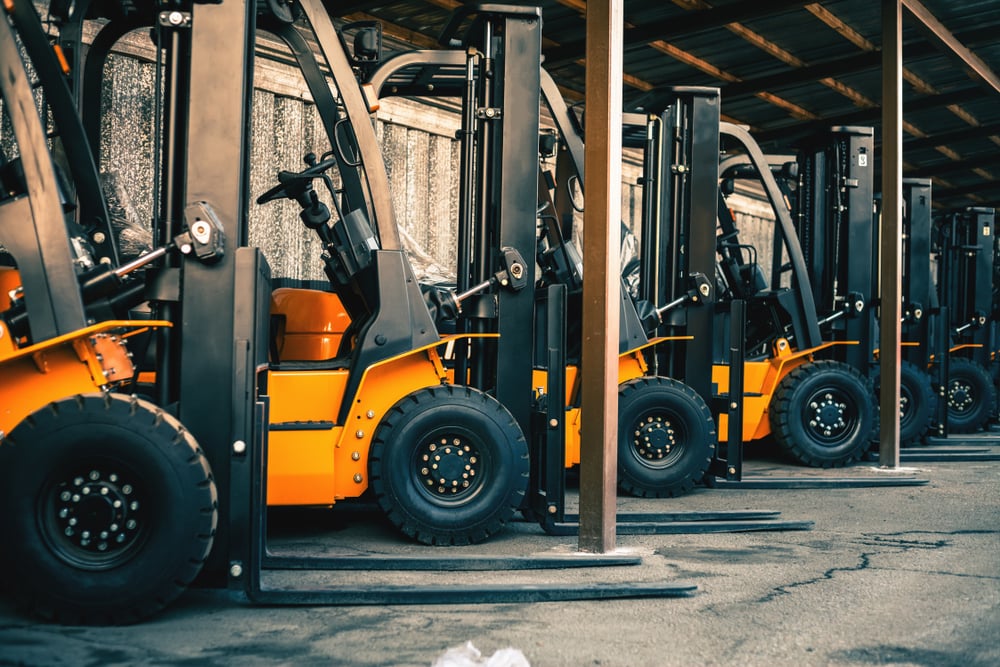REDWOOD LOGIN
Redwood PortalLTL
SCS
SCS Support
Rockfarm

Every year in the United States, there are more than 100,000 forklift-related accidents.
According to statistics provided by OSHA, 34% of these accidents lead to an injury. Out of that, about 100 workers per year are fatally injured due to a forklift accident.
While forklifts appear to be straightforward machines to operate, they can be quite tricky to maneuver in tight confines that you may find along aisles in warehouses.
If you operate a warehouse or distribution center, it might be a good idea to review some of these forklift best practices, to ensure your people stay safe, you reduce the potential of damaging merchandise, and control operational costs associated with these types of tragic accidents.
Like any other mechanical piece of equipment, a forklift has multiple moving parts that need servicing, replacement, and maintenance on a routine basis. There are numerous types of forklifts; all with unique components. As such, there is no universal maintenance program for all forklifts.
There are a few general rules that all forklift equipment owners and users should follow to ensure the safe and efficient repairs and service for the forklifts they use.
Each forklift sold in the US is required to provide the original customer with a service and user manual. This manual documents when to complete routine services. If you are curious about what and when service is due for your forklift, contact the manufacturer of your forklift directly to request a detailed service and maintenance manual.
If you have an older forklift made by a company that is no longer in service, an accredited forklift service company is your next best option. Typically forklifts require a service check-up every 90-days or 100-operating hours.
While many warehouse and distribution center operators roll their eyes at the thought of another monthly bill – the minimal cost of correctly servicing a forklift much less than the cost of a worker’s compensation claim or damaged goods.
Most forklift-related fatalities are due to human error, especially new or poorly trained operators. Therefore, the efficient operation and training of those who operate forklifts is arguably the best way to reduce accidents.
Noted below are a few of OSHA’s recommendations for forklift driver training.
A detailed training program for any driver should be created – not just for new drivers, but to renew a driver’s license every year.
A forklift must have a set of driver restraints, whether they operate a seated or standing forklift. In the case of a rollover, staying inside the forklift’s “cage” can mean the difference between life and death.
Anyone who operates a forklift needs to know how these heavy pieces of equipment work. OSHA recommends creating an inspection program that an operator should complete before operating one.
This is typically notated on all forklifts but is not commonly enforced. All forklift operators must be mindful of the weight and height of freight for max load capability of any equipment they operate.
Forklift safety is also dependent upon the condition of the facility. Things like cracked concrete or unlevel asphalt is another leading cause of several forklift accidents. To reduce the potential of a forklift accident, make sure to follow these facility best practices.
This rule is specifically for foot traffic. If you can avoid the interaction of people with a forklift, you can reduce the potential for disaster.
If a spill happens, make sure to take time to clean up the spill, to maintain traction for heavy forklifts.
Along with keeping the surfaces free of debris, repairing cracks in the road is critical for optimal forklift safety.
According to OSHA, a forklift operating with a full load traveling 10 miles per hour will require 40 feet to come to a complete stop. That’s the primary reason why most warehouse operators enforce a strict three mph speed limit. Moreover, this typically applies to the operation of any forklift – loaded or unloaded.
Nobody wants to be that person who must call a family member of an employee after a tragic accident occurs. Following these three best practices for forklifts can significantly reduce the potential of an accident. However, it is highly recommended that you contact OSHA and the forklift manufacturer to receive their official standards for vehicle maintenance, location safety, and driver training.
Being proactive about forklift service, training, and safety procedures can save a life.